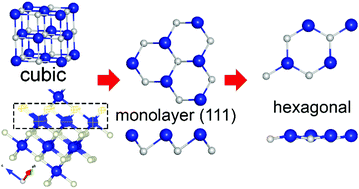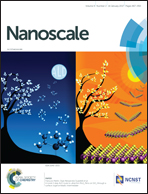Two-dimensional hexagonal CrN with promising magnetic and optical properties: A theoretical prediction†
Abstract
Half-metallic ferromagnetic materials with planar forms are promising for spintronics applications. A wide range of 2D lattices like graphene, h-BN, transition metal dichalcogenides, etc. are non-magnetic or weakly magnetic. Using first principles calculations, the existence of graphene-like hexagonal chromium nitride (h-CrN) with an almost flat atomically thin structure is predicted. We find that freestanding h-CrN has a 100% spin-polarized half-metallic nature with possible ferromagnetic ordering and a high rate of optical transparency. As a possible method for stabilization and synthesis, deposition of h-CrN on 2D MoSe2 or on MoS2 is proposed. The formation of composites retains the half-metallic properties and leads to the reduction of spin-down band gaps to 1.43 and 1.71 eV for energetically favorable h-CrN/MoSe2 and h-CrN/MoS2 configurations, respectively. Calculation of the dielectric functions of h-CrN, h-CrN/MoSe2 and h-CrN/MoS2 exhibit the high transparency of all three low-dimensional nanomaterials. The honeycomb CrN may be considered as a promising fundamental 2D material for a variety of potential applications of critical importance.



 Please wait while we load your content...
Please wait while we load your content...